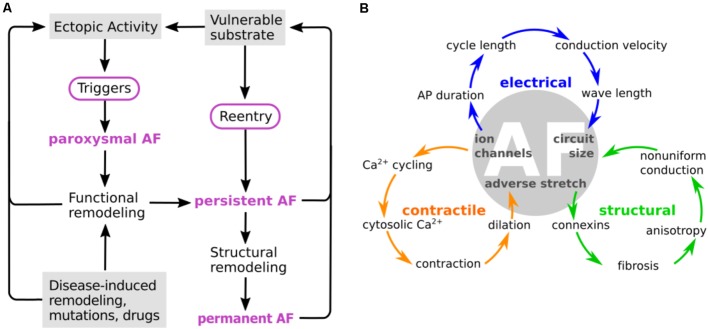FIGURE 1.
Characteristic processes and causalities at the different stages of atrial fibrillation (AF). (A) AF is usually triggered by ectopic activity that act as “drivers” of electrical activation and override the normal sinus node pacemaking activity. The fast pacing induced by the ectopic activity initiates electrical and structural remodeling in the atria, which enhances cellular excitability of the atria, reduces conduction velocity, increases tissue heterogeneities, and creates fibrotic regions that act as reentry anchor points. All these changes contribute to creating a vulnerable substrate that render the atria more prone to arrhythmias, as AF progresses from paroxysmal to permanent, in a process commonly termed as “AF begets AF.” (B) Remodeling of calcium and potassium channels leads to action potential (AP) shortening, which shortens cycle length and wavelength. Ion channel remodeling can also affect conduction velocity. Remodeling of calcium channels and intracellular calcium cycling proteins attenuates changes in cytosolic calcium, which leads to reduced contractile function and promotes atrial dilatation. This results in adverse stretch, which further causes fibrosis and connexin remodeling. Structural changes lead to non-uniform conduction, which together with electrical remodeling reduces the circuit size of electrical activation. From Allessie et al. (2002). Copyright 2012 by Oxford University Press. Adapted with permission.

